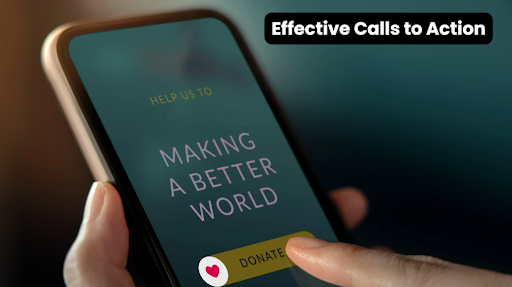To sign up for our daily email newsletter, CLICK HERE
Are your nonprofit site visitors ever bored? Do you wish your site was converting visitors to donor or volunteer action better? In today’s digital age, a great nonprofit website can be the tipping point for engaging audiences, raising funds, and truly amplifying your mission.
A nonprofit website is more than just a presence on the World Wide Web; it is more a tool for communication, education, and action. In this article, we shall explore how nonprofit web design can be better used to engage your audience and raise even more funds for your cause.
Understanding the Importance of Web Design for Nonprofits
For one, your nonprofit website’s first impression matters when people land on it. Research reveals that users usually form an opinion about your website within a few seconds. For such a cluttered, outdated, or poorly navigable site, potential donors and supporters may leave before looking at what your nonprofit offers.
A good web design can do more than improve user experience; it also establishes trust, educates visitors, and elicits action. Since there’s so much at stake, nonprofits need to build on web design strategies that affect, lead visitors through your site, and ultimately convert them into supporters.
Non-Profit Web Design Essentials

Effective nonprofit web design couples aesthetics with functionality. Some of the main components you will want to focus on to create a user-friendly and attention-grabbing website are covered below.
Clear, Impactful Branding
A nonprofit’s brand is its identity, and a consistent visual identity throughout your website helps build trust and recognition. Investing in effective nonprofit web design ensures that these elements are integrated seamlessly, creating a unified look and feel that resonates with your audience. In this, you should use your logo, color scheme, and typography consistently throughout your site to create a cohesive experience.
A robust homepage message will force more of your visitors to keep going to learn more. It must communicate your nonprofit’s mission statement or call-to-action (CTA) in clear, concise language. A big hero image or video able to immediately communicate the impact of your work might be used.
Easy Navigation and User Experience (UX)
A good nonprofit website should be easy to navigate. When a visitor can’t find what he or she wants, the visitor may leave your site quickly. Keep your navigation menu simple and intuitive, with a clear path to the most important pages (e.g., “Donate,” “About Us,” “Get Involved,” “Events,” and “Contact”).
For example, you can have a sticky menu that is always active and accessible while the user scrolls; this will give the most important options at any time. Third, be sure that your site is mobile-friendly since many users will simply get to your website with their mobile phones, so it is important to have a responsive design that will naturally adapt to various sizes.
Effective Calls to Action (CTAs)

No nonprofit website is complete without some calls to action (CTAs). These will help the visitor to the next step-whether that is donating, volunteering, or learning more about the programs of your organization. CTAs should be strategically placed around the website and must pop out for the visitor to notice.
For instance, use CTAs like “Donate Now,” “Join Our Mailing List,” or “Volunteer Today.” Ensure that those buttons are very visible and easy to locate preferably above the fold. Also, ensure that the CTAs lead to donation pages or sign-up forms that are easy to navigate.
Storytelling and Impact
Storytelling is one of the strongest ways to engage visitors and raise funds. Stories can be strong emotional connections for people, and a more vivid connection can be made with your audience by telling your nonprofit’s story, along with those whom you’ve helped. Testimonials, photos, and videos of people or communities affected by your work will better tell your impact and mission.
If the donor or volunteer can see the real tangible differences their support can make, they will definitely give more. Success stories, case studies, and “before and after” evidence of programs and interventions should be featured on your website to indicate your program’s real-world results.
Easy Donations
The simpler you can make the donation process, the more likely site visitors will follow through and give. Make your donation form not too long or difficult, lest you discourage people from donating. Make available to them options for one-time or recurring donations on the simple and user-friendly donation page.
Then, implement secure payment gateways so each transaction will be processed securely. Provide varied giving levels or even specific campaigns so that the donors can choose how to allocate their funds, thus making it more personalized.
Engage Visitors with Content

A good nonprofit’s website is very much a clearinghouse from which visitors learn about the cause and get motivated enough to come back for more. How about blogs, articles, or news of events updates as great ways to exhibit what your nonprofit does and educate visitors?
Updating your blog or content section regularly with news, educational posts, and success stories keeps interest going in the mission. Besides, hosting webinars or online events to further create awareness and promote these from your website can engage visitors in direct interaction with the nonprofit organization and learn more about its work.
Utilize Social Proof
Testimonials, reviews, and user-generated content are all types of social proof that add credibility and trust among the audiences. Share testimonials from former donors or volunteers who have had good experiences at your nonprofit. Often, use badges or certifications, such as “Charity Navigator Approved,” to highlight the legitimacy of your organization.
To show an active and engaged following, you can also feature social media feeds or mentions in the media.
SEO Tips for Optimizing Nonprofit Websites
| Tip |
Description |
| Use Relevant Keywords |
Integrate keywords related to your nonprofit’s mission (e.g., “fundraising for education,” “donate for animal welfare”) into your content. |
| Optimize Website Speed |
Ensure your website loads quickly to enhance user experience and improve SEO ranking. |
| Write Clear Meta Descriptions |
Create concise and relevant meta descriptions for each page to improve search engine visibility. |
| Add Alt Text to Images |
Include descriptive alt text for images to improve accessibility and SEO ranking. |
Conclusion
Creating a well-designed nonprofit website is more than just building a pretty website; it’s about trust, relationships, and getting the visitors to act. Focus on things like clear branding, compelling storytelling, user-friendly navigation, and security for easy donations to provide engaging online experiences that build engagement and raise more money for your cause.
Proper, thoughtful nonprofit web design can increase the impact of your organization’s mission and build a loyal community of supporters. But it can also help raise more funds to support your programs – as long as you keep your website simple, yet powerful and working for you in achieving your nonprofit goals.
FAQs
- Why is web design important for nonprofits?
Web design is crucial for nonprofits because it shapes the user experience, builds trust, and guides visitors to take action like donating, volunteering, or learning more about your cause.
- What should be the main focus of a nonprofit website?
The main focus should be on user-friendly navigation, clear calls-to-action, compelling storytelling, and easy access to donation options to convert visitors into supporters.
- How can storytelling help raise more funds?
Storytelling emotionally connects visitors to your mission, demonstrating the real-world impact of donations, which can encourage people to contribute.